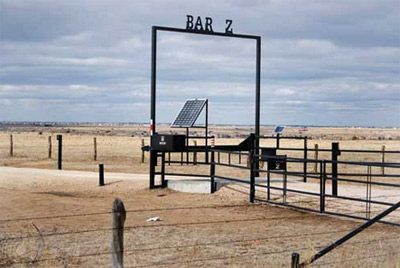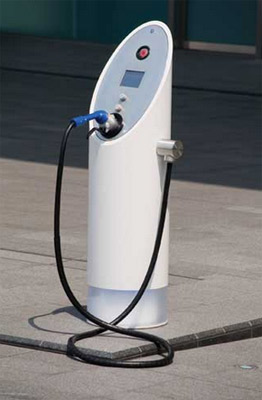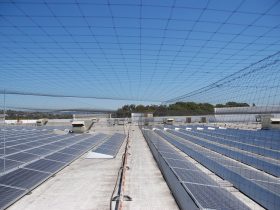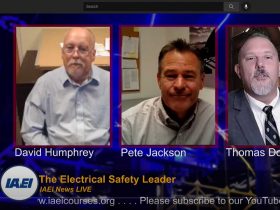Get ready for the new future of the renewable, alternative, everything-we-can-invent-and-provide-an-infrastructure-for era. The second wind of the 21st century is upon us, and the best technological minds available have joined forces to help consumers and users of these new technologies usher in this bright new future. With the flood of these new technologies growing daily by leaps and bounds, we now have to look toward global solutions to harness the power that is to be provided in various ways by these emerging technologies.
Just by mere observation of the world around us, we can see that the wave of new products and technology is approaching enormous proportion, and currently shows no sign of slowing down. To this end, the landscape of plan review that has looked pretty much the same for many years is changing daily, and we need to be aware of the changes and the requirements that these changes carry with them.
The Road Ahead
In this article we will look at the biggest and brightest stars of this new technology era, when it comes to what is being seen on the plan review tables in building departments all over the U.S. and around the world. We will look at and highlight some of the major requirements in the 2011NECthat address the new technologies that we are now seeing in not just the home but the workplace as well. Just taking a small inventory of the new technology around your home or at work can tell you that the world of plan review needs to be an ever-changing palette that will require continual updating of the colors or requirements, if you will, to be competent and confident in the knowledge of these new technologies, when tasked with reviewing them for compliance with codes and standards.
 plan reviewe
plan reviewe
Photo 1. Vehicles that our grandparents only dreamed about are now an everyday item in many homes.
Dedication

It All Looks Good On Paper
At the paper stage, a plans examiner is that guard at the gate, always making sureNECrequirements are met, product standards are adhered to, and overall that the life and electrical safety for the installer, inspector, and ultimately the owners and/or the occupants of any facility have been achieved.
This is one of those tasks that can really make a project go smoothly for all of the concerned parties. At the review stage of a project, the ideas, methods, and alternatives can be discussed and agreed upon before any work actually takes place and most, if not all, of the pitfalls that may be encountered can be addressed. Unfortunately this is not always the case for many projects.

This review, many times taken for granted, is the foundation, the baseline if you will, upon which the job is based. Imagine if you will, building the job and trying to furnish as-built for each and every facet of the installation, only to find out that many elements of the installation need to be removed for lack of proper adherence to NEC requirements, product standards, manufacturer’s installation instructions, or a host of other issues that could adversely affect an otherwise simple straightforward installation.
New Technology
When we look closer at the technology elements that are being used, the different types of transportation available, both for personal and public use, the different sources and available modalities of generating energy not only in our places of business but now at our own homes, we suddenly realize that this era of fast growing technology is here to stay! All this efficient compact fluorescent light bulbs (CFL) and light emitting diodes (LED) lighting for new luminaires, new appliances, smart meters, and even the smart grid have the capability to let us see in real time actual usage and savings— all at the same time. Well, then, let’s look at some of the heavy hitters on the new technology scene.
Old Technology

While we have seen and experienced the marvels, the beauty, the opulence of the various types and methods of incandescent lighting, it is time to say farewell to an old friend and hello to the future.
Super Efficient Luminaires

EV and PHEV charging system integration
As more and more consumers make the switch to hybrid or all-electric vehicles, it is fast becoming necessary to provide a means for charging these vehicles at home. While there are several public entities that provide a means to charge while the consumer shops or dines, these locations are not readily available in many states. Therein lies the question, how can we provide this desperately needed piece of the technology puzzle in the home? Article 625 of the 2011NECprovides very detailed requirements for installing an electric vehicle (EV) charging system at home. From the voltages required for the charging equipment in 625.4, wiring methods in 625.9, to the minimum ventilation that is required in 625.29, installing a charging system in the home is readily achievable, and can now be a viable source for everyday charging and maintenance of the family EV.
Photovoltaics
We’ve come a long way since solar watches and calculators. What we once thought only possible on a limited basis is now possible not only for the home but is now available commercially and is taking hold fast. With the advent of micro inverters, solar panels that are more efficient, concentrated solar and high concentration lenses for solar panels, the photovoltaic (PV) industry is taking shape and coming into its own. While there was a day when heating hot water and passive solar was all the rage, we are currently experiencing resurgence in the field of turning the sun’s rays into electricity.
Not unlike the space race in the early sixties, the race to become the largest purveyor of PV has reached epic proportions across the globe. Many countries are locked in this race — China and India to name two— and have invested vast sums of capital to ensure their share of this growing market. Ever vigilant, the NEC has marched along with PV since its early days, and Article 690 continues to keep pace with the many changes and improvements. No doubt with the continued interest, development, and benefits to a world hungry for electricity, PV will certainly make its mark on new technology scene.
Wind
While most consumers view wind generation as something only done by mega corporations and power companies, smaller scale wind energy systems are now available to supplement energy demands in the home. A new Article 694 in the 2011NEChas been written as a starting place. We can build on this wind technology to perhaps one day power our homes completely and utility-provided power will only be used as a backup. While Article 694 currently addresses systems up to 100 kw, it won’t be long until we see a day when wind, like PV, will be able to provide unlimited power.
Education
Now that we have looked at some of the brightest stars out in the world of emerging technology, it’s easier to understand the vital importance of plan review of electrical systems and installations prior to their construction. With the many different and varying requirements that are ever-changing as we move forward, we need to be at the forefront of this wave that has reached into every bit of our daily lives with hopes of convenience, enhanced productivity, and perhaps a little more personal time.
Retrospect
Well, we have looked at some of the major players in this emerging renewable energy industry and have seen that we are merely on the cusp of what could very well change everything as we know it. We have seen how we are now part and parcel of an industry that has thrust itself upon us at the beckoning of consumers hungry for ever more efficient means to provide clean, long-lasting renewable energy as an option to fossil fuels and other methods of energy production. We have seen where those technologies are addressed and what some of the new requirements are as well; we have seen what an important role plan review plays in the overall success of any electrical project from start to finish. We must now finish the journey we have embarked upon. While it may be future generations that experience the full potential of all of this new technology, we must continue to educate ourselves and others as we move forward into this bright new future.










Find Us on Socials